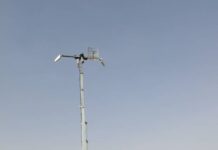
Whether the purpose is to assess the value of an acquisition target or to decide on advancing a project to its next stage, a due diligence study on the exploration work conducted is a vital risk mitigation measure.
“The orebody and its geological setting form the foundation of a mineral project’s value, so the project champions and other stakeholders need to have the utmost confidence in the reliability of the exploration results,” says Marcin Wertz, partner and principal mining engineer at SRK Consulting (South Africa). “It might be possible to ‘engineer out’ many of the later challenges in a mining project, but the geological value inherent in the orebody is fixed and can’t be improved; the exploration process therefore needs to be systematically and professionally conducted in line with the highest standards.”
Such a due diligence is essentially an audit of how the prospecting and exploration has been done, and the procedures for extracting geological data that forms the basis for valuation. However, there are many factors to consider, says Wertz, and so a due diligence usually has to cover the same ground as the initial feasibility study.
Codes and standards
For the exploration aspects, a key focus of the due diligence is how well the project developers have aligned with the selected reporting codes for mineral resources and reserves, explains Alan Page, principal geologist at SRK Consulting (South Africa). These codes – such as SAMREC for South Africa and JORC for Australasia – set out the minimum standards for public reporting of exploration results. This aims to enhance confidence in these results among stakeholders like stock exchanges, lenders, investors and regulators.
“To effectively apply these codes, the exploration process must follow certain standard operating procedures (SOPs),” said Page. “These SOPs cover multiple aspects, including the method and standard of the actual exploration drilling, and the protocols that drive quality assurance and quality control.”
Drillhole spacing, positioning
Among the areas where quality concerns can arise is in topographic and drillhole surveys, which need to form part of the due diligence checklist. Requirements might vary between commodities, and the professional practitioners conducting the study would need to take these into account. A commodity such as gold, for instance, has strict guidelines relating to the spacing of drillholes (SANS 10320:2016), according to Nicolaas Steenkamp, principal geologist at SRK Consulting (South Africa).
“Drillhole spacing for most minerals would be recommended by a Competent/Qualified Person with experience of the deposit type or orebody in question, but they would still tend to specify narrower spacing for complex or alluvial deposits – as opposed to tabular bodies which could manage a wider spacing,” said Steenkamp.
There can also be issues with historical exploration results where there are inaccuracies, for example, in actual drillhole positions – which may cast doubt on the validity of the models developed from this data, said Ivan Doku, partner, resource geologist and country manager of SRK Consulting (Ghana).

“In a recent case where we experienced this challenge, we recommended to a client that we conduct a light detection and ranging (LIDAR) survey to check the accuracy of the elevation model,” said Doku. “Without this correction, the geological model would have led to unsuitable mine plans.”
No short cuts
He highlighted that mineral exploration is usually capital intensive and costly, but it is inadvisable to cut corners at this critical stage. His experience of the challenges that clients face when their exploration standards are below par, is that it costs much more to rectify deficiencies later – and could easily put the entire future of a project at risk.
“Conducting a due diligence on exploration at an early enough stage can flag issues that need attention – so that they do not threaten the project after it begins to gather momentum,” said Doku.
Samples and testing
The guidelines contained in the mineral reporting codes are intended to mitigate against issues like sample loss before it reaches the laboratory, or incorrect labelling which can lead to samples having to be discarded. Page noted that if the correct amount of material recovered per hole is not acceptable, the analysis results can end up being unrepresentative.
“Another issue is the analysis itself. Has the analysis been done by an accredited laboratory? And was sample preparation properly conducted?” he said. “This is closely linked to the quality controls on the drilling itself; if the process is not fully standardised and controlled, there can be inconsistencies arising from a change of staff.”
He emphasised that the lack of independent quality assurance and quality control (QAQC) programmes can be a fatal flaw in exploration projects, as it would allow sub-standard procedures by those undertaking the work to go unnoticed.
Grade, density and tonnage
Density measurement during the exploration phase is another area where there is often insufficient attention, he explained. As the density variable is a key determinant in calculating tonnage, any inaccuracies in density data will lead to incorrect estimates and hence tonnage forecasts. This is likely to create serious flaws during mine planning.
“When reporting a resource, we report on both grades and density; while there is a heavy focus on grades, there is often too little attention paid to density,” said Page. “Metal content is a function of tonnage and grade, so if your tonnage estimate is wrong then your metal content forecast will be wrong.”
Geological mapping to delineate the size and extent of the orebody, as well as structural mapping to find underground faults that will affect modelling, are among the other elements that are critical to the final resource estimations. So too is the lithology, which reflects the different ore zones and geological domains with varying characteristics.
“Leaving out just one aspect of a long and complex exploration process – such as the systematic surveying of drillhole columns – can put all the exploration results at risk,” said Page. “Through a due diligence study, we can review clients’ procedures to assess the level of compliance, and monitor to check that any recommended adjustments are implemented.”



